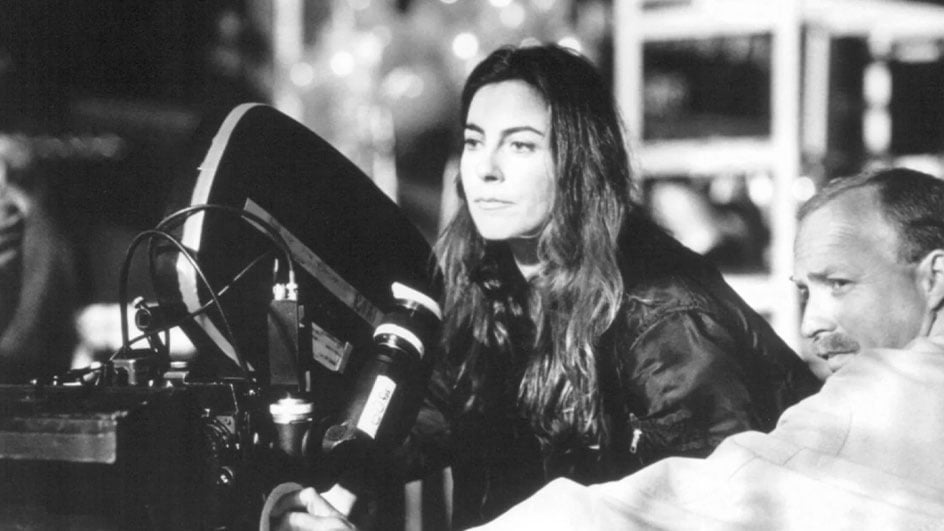
Mar 11, 2022
What if I told you that the first woman to ever win an Oscar for Best Director was actually the mother of modern action cinema as well?
You might be a little bit surprised, as her 2008 award-winning film (which also won Best Picture), The Hurt Locker, could be better remembered for its dramatic and high-tension thriller elements than for any prototypical fight or car chase action sequences.
However, it’s for that exact reason that we celebrate Kathryn Bigelow as one of the best directors of our time, and a true champion of modern action cinema as well.
From Point Break to Zero Dark Thirty, Bigelow’s work behind the camera almost single-handedly gave the action genre a complete makeover, adding in much needed realism, an extra level of kinetic energy, and a deeper understanding of what makes our beloved action heroes tick.
So, in celebration of Bigelow’s achievements — plus in appreciation of the doors that she’s already opened for other female Best Director Oscar winners like Chloé Zhao — let’s explore how Bigelow has cemented her legacy as the mother of modern action cinema and why filmmakers should do their best to learn from her to improve their own projects.
Kathryn Bigelow's cinematic influences
From her very first project — a 20-minute short featuring two characters fighting as a way to deconstruct violence in film — Bigelow has been a powerful new voice in the history of action cinema.
Citing influences from tough cinema classics like The Wild Bunch, Mean Streets, and even The Terminator, Bigelow was primed to bring a new voice and direction to a legacy genre from the moment she was handed the reins to her own big budget projects.
Developing her own directorial trademarks
Once given the opportunity to shepherd a project from beginning to end on her own, Bigelow was able to quickly develop her own directorial trademarks. As you can see in the video essay by Fandor, some of Bigelow’s cinematography styles have changed over the years, but the heart of her films delve into deep, and often uncomfortable, questions about how we view action and violence itself.
Bigelow also makes heavy use of POV shots throughout her films as a way to further bring the audience into the story, as well as put the audience into the mindset of many of her conflicted heroes as they wrestle with their motivations in the story.
What The Hurt Locker means today
After finding early success in the 1990s with genre classics like Blue Steel, Point Break, and Strange Days, Bigelow’s biggest breakthrough came after a six-year break with 2008’s The Hurt Locker.
Representing a stylistic and tonal shift for the director, The Hurt Locker was much darker, grittier, and more realized than her previous films. It was also shot with what could be considered closer to an indie filmmaker’s perspective, as its production was smaller and more documentarian in approach.
This removal of the constraints of big budget blockbuster expectations helped give Bigelow’s filmmaking more room to breathe, so to speak. Her first foray into this style found immediate success, with Bigelow winning her Best Director Oscar, as well as the film taking home the award for Best Picture.
More than a seat at the table
To many fans of Bigelow’s early work with films like Point Break and Near Dark, the accolades for The Hurt Locker and her follow-up thriller Zero Dark Thirty are well deserved and certainly overdue. With an Oscar under her belt, Bigelow’s name has finally been added in the mix as one of the greatest action directors of all time.
As you can see in the roundtable discussion above, Bigelow is one of the most respected voices in the room in regards to the current state of action filmmaking as well as cinema in general.
Along with her peers like Peter Jackson, Lee Daniels, and Quentin Tarantino, Bigelow’s years of experience and fierce cinematic voice are also helping to shape filmmaking’s future.
The future of filmmaking and action cinema
All of this leads us to the most exciting part of our look back at Bigelow’s career and influences on modern action films. While helping to push the genre deeper into complex character studies and more realistic documentary styles, Bigelow is also at the forefront of a budding revolution in terms of how filmmakers shoot films and tell stories.
As technology continues to advance, the budgetary and institutional roadblocks which limited more voices and diversity in the industry are quickly giving way to new opportunities for filmmakers to create with cheaper, easier, and much more accessible tools.
In this above featurette put out by Apple, we can see Bigelow on set with her fellow Oscar-nominated cinematographer Greig Fraser as they take us through an example of how easy productions of the future can be with smartphones like the iPhone 13 Pro.
Still, in looking back throughout Bigelow’s career, her influences over a genre synonymous with cheesiness and insincerity showcases just how much modern action cinema owes to her work and having her unique voice shaping its path. Not just now and in the past, but also for the future.
Further reading
If you’d like to read up more on other filmmaking legends, as well as glean some more advice and tricks for your own projects, check out these articles from the Soundstripe blog: